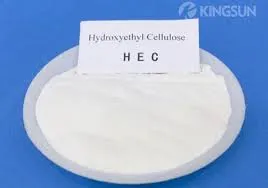
Jan . 02, 2025 17:49 Back to list
hpmc grades
Understanding HPMC Grades An Overview
Hydroxypropyl Methylcellulose (HPMC) is a versatile cellulose ether widely used across various industries, especially in pharmaceuticals, food production, and construction. Its numerous beneficial properties stem from its unique chemical composition and structure. To fully appreciate its applications and benefits, it is essential to understand the different grades of HPMC available in the market and how they affect the material’s performance in specific applications.
What is HPMC?
Hydroxypropyl Methylcellulose is derived from cellulose, which is a natural polymer obtained from wood or cotton. HPMC is created through a series of chemical processes that introduce hydroxypropyl and methyl groups to the cellulose backbone. This modification not only enhances the solubility of cellulose in water but also improves its thermal and rheological properties. As a result, HPMC has become an invaluable ingredient in many products, allowing for better performance attributes such as thickening, binding, and film-forming.
Grades of HPMC
HPMC grades are differentiated mainly by their viscosity, degree of substitution, and intended application. The key parameters that define the grades are
1. Viscosity Viscosity is a critical factor as it affects how the HPMC behaves in solution. Different applications require varying viscosity levels. For instance, pharmaceutical formulations may require low-viscosity HPMC for easier mixing, whereas higher viscosities might be necessary for constructing strong gel formulations or adhesive products.
2. Degree of Substitution (DS) The degree of substitution indicates how many of the hydroxyl groups in the cellulose backbone have been replaced by hydroxypropyl and methyl groups. A higher DS typically means more hydrophobic characteristics, which may be beneficial for various applications such as controlled release in drug formulations.
3. Purity Different grades may have varying levels of purity, impacting their suitability for sensitive applications like food and pharmaceuticals. Higher purity grades are essential in these sectors to minimize contamination risks.
hpmc grades

Applications Across Industries
The versatility of HPMC enables its use in numerous applications across different industries
1. Pharmaceuticals In the pharmaceutical industry, HPMC is extensively used as a binder in tablets, and as a coating agent. It can also serve as a controlled-release agent, ensuring that the active ingredients are delivered effectively over time. Its non-toxic nature and ability to dissolve in both hot and cold water make HPMC an ideal choice for oral dosage forms.
2. Food Industry HPMC acts as a food thickener and stabilizer, commonly used in sauces, dressings, and bakery products. Its emulsifying properties help maintain the texture and consistency of food products, ensuring they remain appealing to consumers.
3. Construction The construction industry utilizes HPMC as an additive in cement, plaster, and tile adhesives. It enhances the workability and adhesion properties of these materials, allowing for better performance and durability in construction projects.
4. Cosmetics In cosmetics, HPMC serves as a thickening agent and a film-former in creams, lotions, and gels. It helps improve the texture and feel of products, making them more pleasant to use.
Conclusion
Understanding HPMC grades is essential for researchers, manufacturers, and end-users alike. The choice of grade can significantly impact the performance of products across various applications, from pharmaceuticals to food and construction. With ongoing advancements in technology and increasing demand for high-quality, efficient materials, HPMC continues to evolve, playing a key role in developing innovative formulations and solutions across multiple industries. Its remarkable versatility and functional properties make HPMC an invaluable compound, underscoring its importance in contemporary product formulation and development.
By selecting the appropriate grade of HPMC, manufacturers can ensure that their products meet the necessary performance criteria, driving efficiency and effectiveness while addressing consumer needs.
-
Versatile Hpmc Uses in Different Industries
NewsJun.19,2025
-
Redispersible Powder's Role in Enhancing Durability of Construction Products
NewsJun.19,2025
-
Hydroxyethyl Cellulose Applications Driving Green Industrial Processes
NewsJun.19,2025
-
Exploring Different Redispersible Polymer Powder
NewsJun.19,2025
-
Choosing the Right Mortar Bonding Agent
NewsJun.19,2025
-
Applications and Significance of China Hpmc in Modern Industries
NewsJun.19,2025







